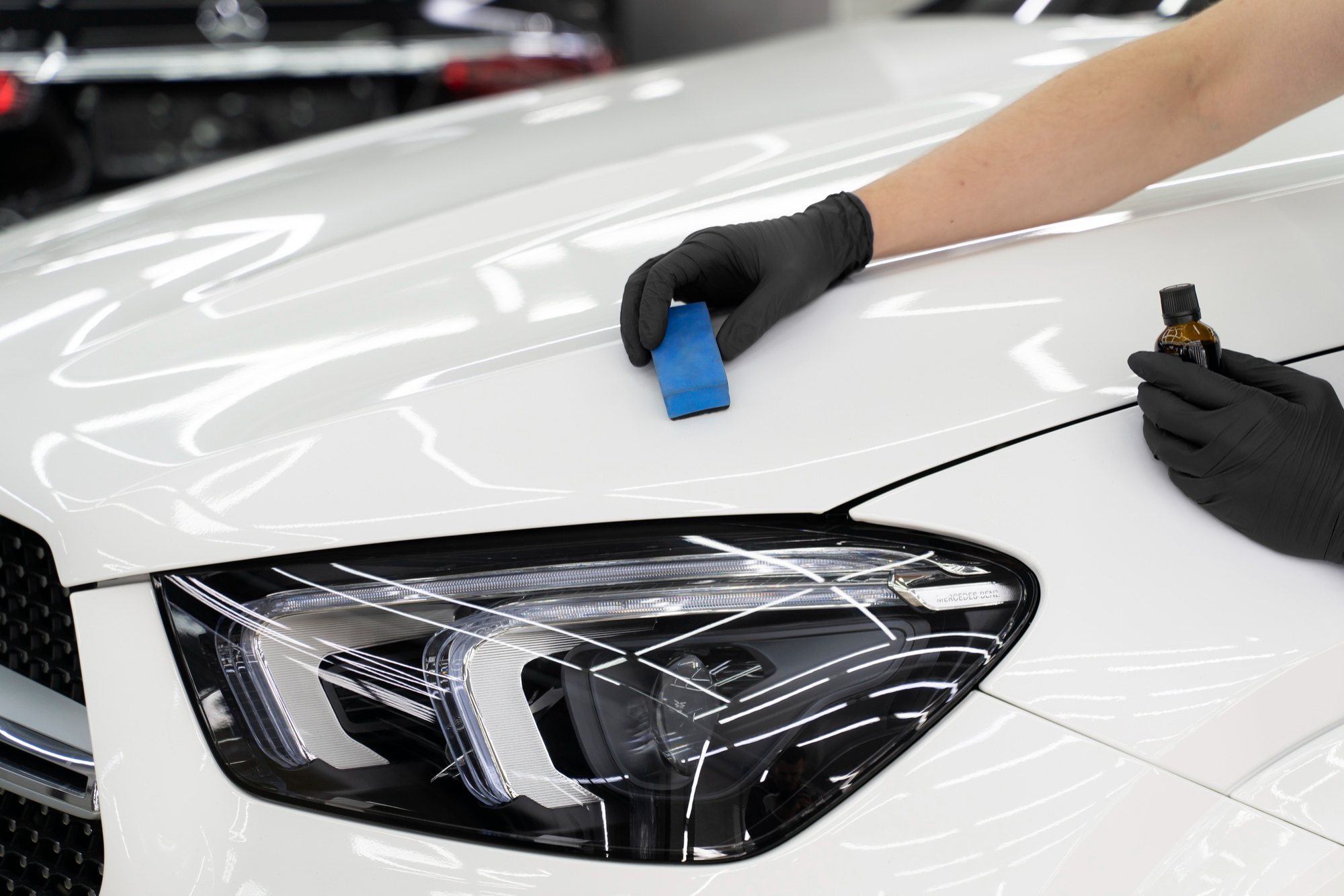Premium Ceramic Coatings San Jose for Ultimate Vehicle Protection
Premium Ceramic Coatings San Jose for Ultimate Vehicle Protection
Blog Article
Revealing the Scientific Research Behind Ceramic Coatings: Just How Does It Job and Why Is It Above Conventional Options?
Ceramic coatings have actually been getting popularity in various sectors for their remarkable efficiency and sturdiness. The scientific research behind these finishes exceeds mere surface defense, delving right into the complex chemistry that makes them attract attention from typical alternatives (ceramic coatings san jose). Recognizing exactly how ceramic finishings work and why they outperform conventional choices is critical for those looking for to boost the long life and durability of their products. What specifically establishes ceramic layers apart, and exactly how do they achieve such remarkable outcomes?
The Chemistry of Ceramic Coatings
In understanding ceramic finishes, diving into the complex chemistry behind their make-up is essential for understanding their performance and toughness. Ceramic finishings are mainly made up of silicon dioxide (SiO2), which creates a safety and solid layer when used to various surfaces. This chemical framework gives phenomenal resistance to heat, chemicals, and corrosion, making ceramic finishings very sought after for a large range of applications.
The chemistry behind ceramic finishes involves the formation of covalent bonds in between silicon and oxygen atoms, producing a rigid network that boosts the layer's toughness and durability. In addition, the visibility of other elements such as zirconium, light weight aluminum, and titanium further boosts the finish's buildings, offering enhanced solidity and adhesion to surface areas.
Comprehending the chemical composition of ceramic finishes enables the customization of solutions to fit particular demands, whether it be for vehicle, commercial, or household objectives. By harnessing the power of chemistry, ceramic coverings proceed to lead the way for superior security and efficiency in various markets.
Advantages of Ceramic Coatings

One more substantial advantage of ceramic layers is their hydrophobic nature. This building creates water to bead up and roll off the layered surface, bring dirt and pollutants with it. As an outcome, ceramic layers make cleansing and maintaining surfaces a lot easier and less time-consuming. Ceramic coatings offer improved gloss and color depth, offering surface areas a vivid and shiny appearance. In general, the wide variety of benefits provided by ceramic coatings make them a premium alternative compared to conventional finish techniques.
How Ceramic Coatings Bond
Ceramic finishes bond to surfaces through a process that entails molecular bond and chemical interactions. When a ceramic layer is used to a surface area, it develops a solid bond by chemically sticking to the surface at a molecular level.
Additionally, the chemical interactions in between the ceramic finishing and the surface area further improve the bond. ceramic coatings san jose. These communications permit the ceramic layer to produce a seamless and continuous next page layer externally, supplying outstanding security and durability. Unlike traditional coverings that may sit on the surface without totally bonding, ceramic finishings develop an irreversible bond that is immune to chemicals, UV rays, and severe ecological problems

Basically, the bonding system of ceramic layers guarantees a effective and resilient safety layer that exceeds standard finish alternatives. This exceptional bond contributes to the longevity, scrape resistance, and durability of ceramic coverings, making them a favored option for numerous applications.
Resilience of Ceramic Coatings
The remarkable durability of ceramic finishes comes from their durable molecular adhesion and chemical communications with surface areas, making certain a resilient safety layer that surpasses standard finishing options. As soon as applied, ceramic coatings develop a strong bond with the substratum, producing a resilient obstacle against various ecological stressors such as UV radiation, chemicals, and abrasions. This bond is so protected that it can withstand the rigors of everyday use without wearing away or degrading quickly.
Unlike conventional layers that may deteriorate over time, ceramic coverings maintain their honesty for an extensive duration, providing resilient security for the underlying surface area. On the whole, the extraordinary sturdiness of ceramic coatings makes them an exceptional choice for safeguarding a large range of surfaces in different applications.
Ceramic Coatings Vs. Standard Choices
In comparison to traditional covering methods, ceramic coverings supply an unique mix of sturdiness and protective capacities that establish them apart in numerous surface security applications. Conventional options such as wax or sealers supply a short-term layer of security that can wear away swiftly, calling for frequent reapplication. address On the various other hand, ceramic finishings form a solid bond with the surface area, creating a long-term or semi-permanent barrier that is highly immune to abrasion, chemicals, UV rays, and extreme temperatures.
Additionally, ceramic finishings offer premium hydrophobic residential or commercial you could check here properties compared to typical coatings. The hydrophobic nature of ceramic coverings causes water to bead up and roll off the surface area, carrying dirt and pollutants with it. This self-cleaning impact aids to preserve the surface area's sanitation and gloss for extended periods, decreasing the requirement for regular upkeep.
In addition, ceramic layers have a thicker layer compared to traditional options, providing enhanced scratch resistance and security against minor impacts. This durability makes certain long-lasting performance and helps preserve the aesthetic appeal of the treated surface area for a prolonged period.
Final Thought
Finally, the scientific research behind ceramic finishings hinges on their chemical structure and bonding homes, making them above typical options. The benefits of ceramic coverings consist of raised sturdiness and security for surfaces. By understanding just how ceramic coverings job and their advantages over conventional choices, one can make informed choices when thinking about covering options for numerous applications.
Unlike conventional coatings that may rest on the surface area without totally bonding, ceramic coverings develop a permanent bond that is immune to chemicals, UV rays, and extreme ecological problems.
The remarkable durability of ceramic finishes stems from their durable molecular bond and chemical communications with surface areas, ensuring a long lasting safety layer that goes beyond standard covering alternatives.Unlike conventional finishes that may weaken over time, ceramic finishes preserve their integrity for an extensive period, giving long-lasting security for the underlying surface area.In comparison to standard covering methods, ceramic finishes supply a distinctive mix of resilience and safety abilities that set them apart in different surface protection applications. By recognizing how ceramic finishes job and their advantages over traditional alternatives, one can make informed choices when thinking about covering choices for numerous applications.
Report this page